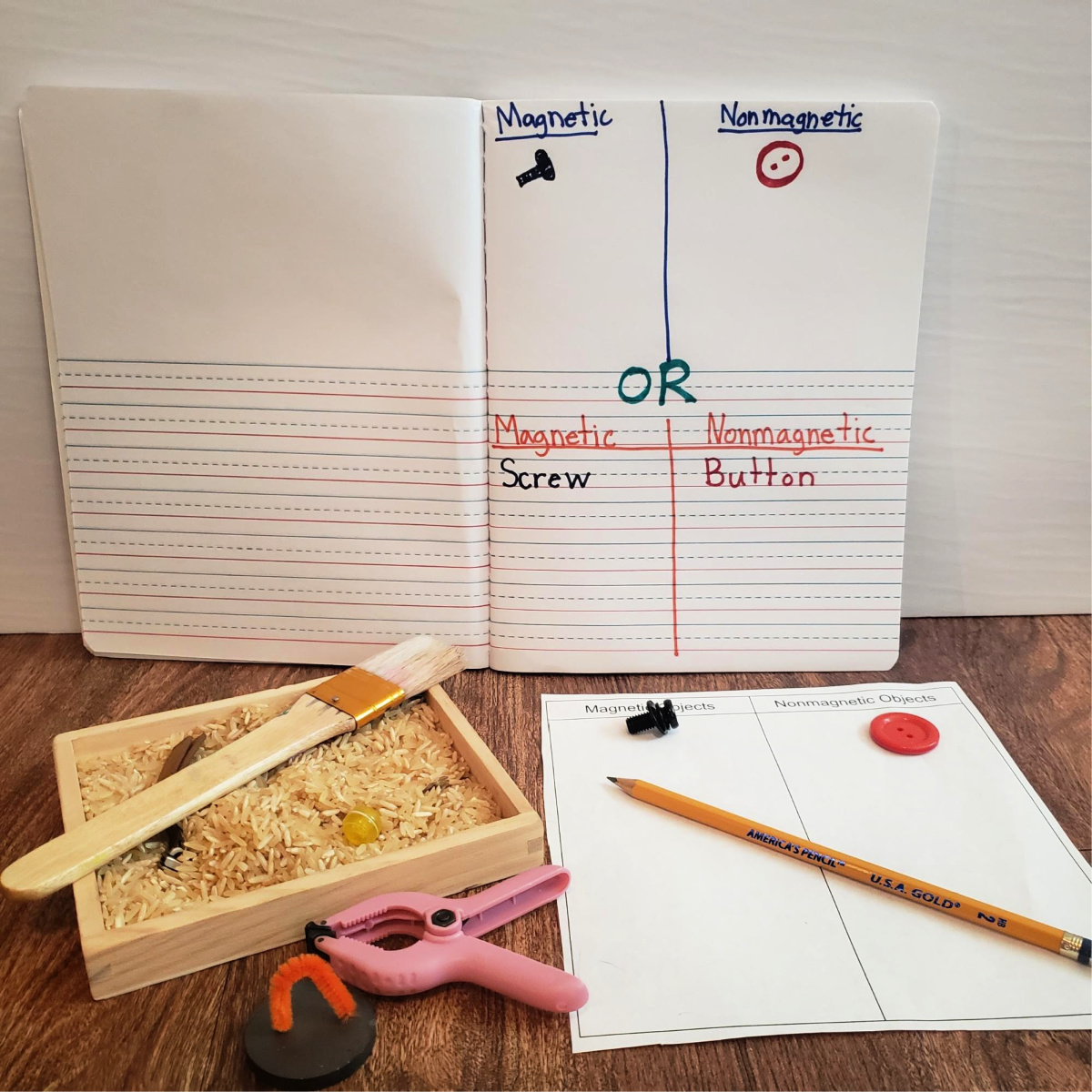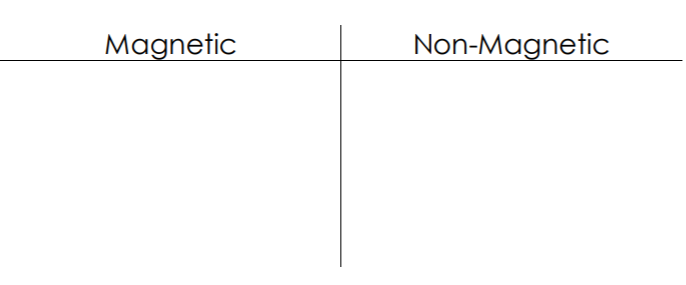This activity, an invitation for research about magnetism, is designed for lower grade schoolers, ages 6–9 years old, and is part of a set of six activities for children and teens about Exploring Magnetism.
It can be done alone or in sequence with the first two activities in this series, Activity for Toddlers and Activity for Preschoolers. Although their titles indicate that they are accessible for younger children, they also work as a starting point: The Activity for Toddlers is the introduction to magnetism and the Activity for Preschoolers is about developing questions about magnetism.
Magnetism Vocabulary
For this activity, you’ll need to present some larger vocabulary to your child.
Magnetic vs. Non-Magnetic
Magnetism: The property of attracting iron (or any magnetic material).
A magnet can attract magnetic substances only.
Non-magnetic substances are not attracted by a magnet.
The objective of this activity: Use the magnets to identify items as magnetic substances and non-magnetic substances.
Modeling How to Research Magnetism
This activity will begin the same way as the Activity for Preschoolers, but there will be a writing extension involved. And like the Activity for Toddlers, you will invite your child to sit in front of you or to the right of you and model how to do this activity. You will read the labels “magnetic” and “nonmagnetic” slowly and purposefully before you place them at the top of your work area. You will then begin to peacefully dig and uncover the items from the rice, touch them with your magnet, show SHOCK AND AWE, and then categorize items between magnetic and nonmagnetic. But just the first few, then let them have a go at it!
Materials Needed
Here are the materials you’ll need to create the bin and work space so that lower grade schoolers can research magnetism.
Magnets
Various magnetic and nonmagnetic items
Two labels (“Magnetic” and “Nonmagnetic”)
Dry rice
Wooden box or plastic tray
Paper and pencil for your child to write with
Paint brush
Pliers or tweezers
Procedure for Researching Magnetism
After they have finished sorting the actual materials, they will take some time to write out the words and/or draw out the pictures of the items. Remind them that scientists alway record their data so that they can analyze it later!
Have your child draw this T-chart just like this on a piece of paper and title both sides:
Extending the Learning About Magnetism
I hope that you and your child have fun together! The next activity in this series is Activity for Upper Grade Schoolers (10–12 years old).
For a full list of all six activities in this series please click here.
About the Author
Kelly Alston is a kindergarten teacher at the School of Science and Technology—Discovery who has been in love with learning for almost two decades. She has been happily married for almost 11 years and has a super rambunctious almost-eight-year-old daughter who loves science! Kelly herself is extremely extroverted and misses being in crowds of children and people in her classroom or at summer camp, but her introverted husband and daughter have been helping her to find joy in new ways, like making masks for their friends and family in their spare time.

